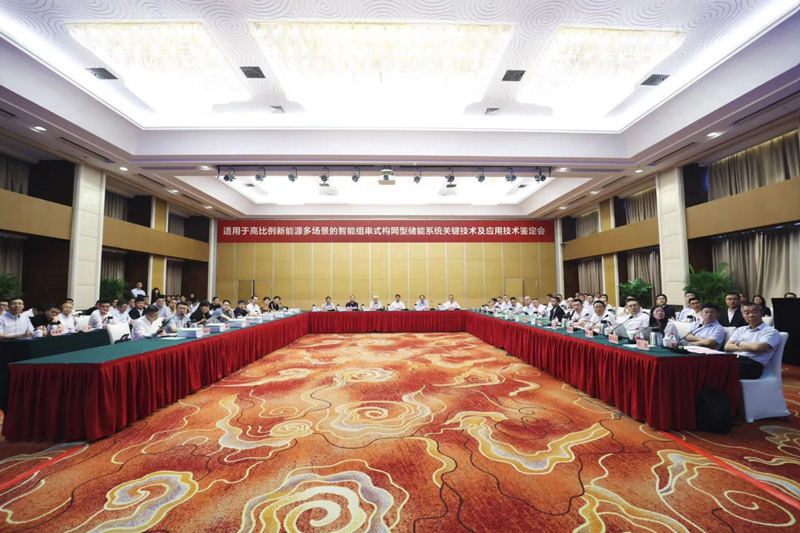[Beijing, China, July 28, 2024] Huawei's Smart String Grid-Forming Energy Storage System (ESS) underwent a rigorous technology appraisal meeting organized by the Chinese Society for Electrical Engineering. The committee comprised 13 experts from research institutions and companies, including Zhou Xiaoxin, member of the Chinese Academy of Sciences, Shu Yinbiao, Guo Jianbo, Rao Hong, Wang Chengshan, members of the Chinese Academy of Engineering, and experts from State Grid Corporation of China (SGCC), SGCC Dispatch Center, China Renewable Energy Engineering Institute, China Electric Power Planning & Engineering Institute, China International Engineering Consulting Corporation, China Huaneng Group, and CHN Energy. The appraisal meeting aimed to evaluate the key technologies and applications of the Smart String Grid-Forming ESS designed to cater to various scenarios with a high proportion of renewables.
This appraisal was applied for by Huawei Digital Power and other nine companies. After rigorous review, the committee unanimously agreed that the projects developed by the applicant companies have achieved world-leading capabilities in terms of improving new power system stability and renewable energy integration. The committee also agreed that the companies have developed and adopted the Smart String Grid-Forming ESS through research in multi-site self-synchronized amplitude and frequency regulation technology, wideband self-stabilizing and stabilizing control technology, smart string two-stage conversion architecture, and power modules.
 Photo of the technology appraisal meeting
Photo of the technology appraisal meeting
The onsite test and operation results demonstrate that Huawei's Smart String Grid-Forming ESS significantly improves the grid integration of renewable energy and applies to various scenarios, including strong and weak power grids and off-grid conditions. In on-grid scenarios, Huawei's solution demonstrates capabilities similar to synchronous generators (including synchronous condensers) in supporting the stability of voltage, frequency, and power angle. In off-grid scenarios, the solution has been put into commercial use and operates reliably for a 100% PV+ESS microgrid at the GWh level. The preceding tested performance reaches or exceeds the current performance in the industry.
At the appraisal meeting, the committee pointed out that the Smart String Grid-Forming ESS developed by Huawei Digital Power features a unique architecture and has been tested and verified in multiple projects and scenarios. These tests have proven the grid-forming ESS's capabilities to support power systems, which is a significant and innovative contribution to the development of grid-forming technologies. These tests on Huawei's Smart String Grid-Forming ESS are important references for formulating grid-forming energy storage standards.

Hou Jinlong, Director of the Board of Huawei and President of Huawei Digital Power said that the grid-forming ESS is a key technology for the new energy industry and can be widely applied to various sectors. Huawei will continue to increase R&D investment in core technologies such as grid forming, energy storage safety, digitalization, and work with industry partners, including power grid companies and power generation enterprises, to promote the standardization of the global grid-forming technology.
Looking ahead, Huawei's Smart String Grid-Forming ESS is expected to be widely used in various scenarios, including renewables integration, weak power grids, and microgrids. It will help the high-quality development of the global new energy industry and lead the energy storage industry into a new era of grid-forming.

 Search
Search




 Search
Search


